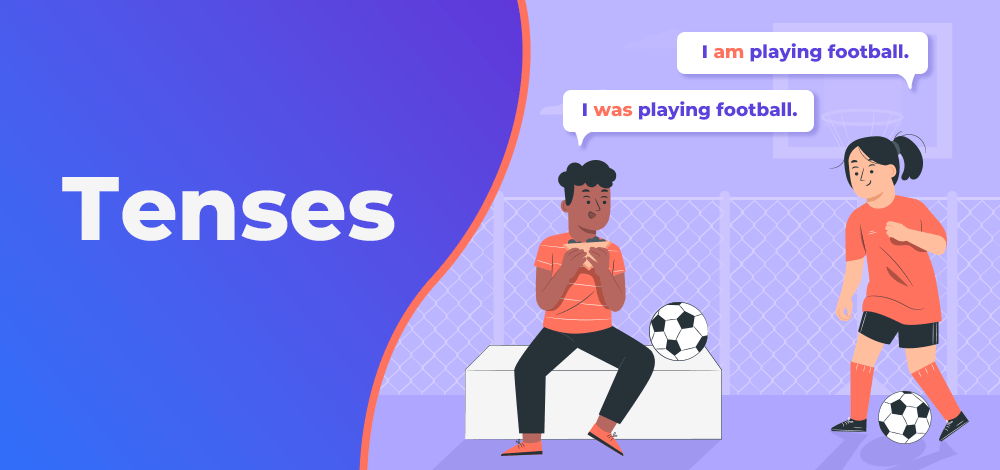Understanding Tenses
Tenses in English grammar are used to indicate when an action is happening. They help in understanding the timing of actions and events.

Types of Tenses
There are 12 types of tenses in English grammar:
- Present Simple:
Describes habitual actions, e.g., "I eat breakfast." - Present Continuous:
Describes ongoing actions, e.g., "She is playing soccer." - Present Perfect:
Describes completed actions with a connection to the present, e.g., "They have finished the project." - Present Perfect Continuous:
Describes ongoing actions with a connection to the present, e.g., "He has been studying for hours." - Past Simple:
Describes completed actions in the past, e.g., "She walked to school." - Past Continuous:
Describes ongoing actions in the past, e.g., "They were playing games." - Past Perfect:
Describes completed actions before another point in the past, e.g., "He had already left when I arrived." - Past Perfect Continuous:
Describes ongoing actions before another point in the past, e.g., "She had been working all day." - Future Simple:
Describes actions that will happen in the future, e.g., "We will meet tomorrow." - Future Continuous:
Describes ongoing actions in the future, e.g., "They will be traveling next week." - Future Perfect:
Describes completed actions in the future before another point in the future, e.g., "By next year, I will have graduated." - Future Perfect Continuous:
Describes ongoing actions in the future before another point in the future, e.g., "He will have been working here for five years."

Using Tenses Correctly
Using the appropriate tense is essential for clear and accurate communication. It helps convey the timing of actions and events accurately.
Resources
To learn more about tenses and their usage, explore the following resources: